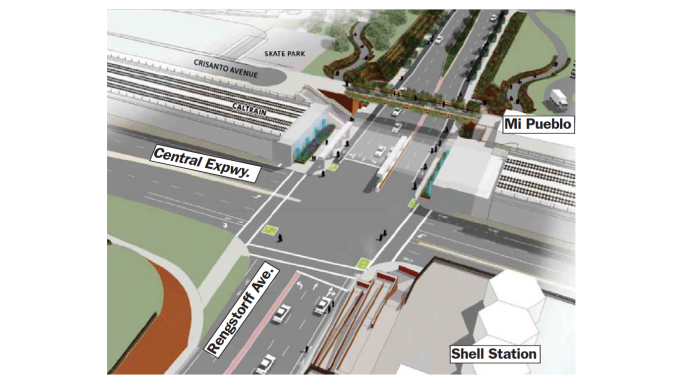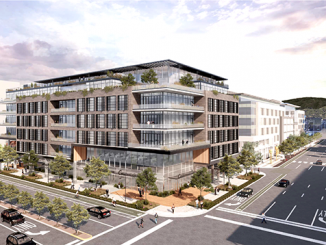
BY ELAINE GOODMAN
Daily Post Correspondent
The city of Mountain View is one step closer to building a bridge to separate Rengstorff Avenue from the Caltrain tracks — a project that dates back to at least 2004.
The City Council Nov. 27 approved moving forward with the preliminary engineering and environmental phase for the project, which will be conducted in partnership with the Caltrain joint powers board at a cost of about $3.5 million.
The council also agreed to formally notify Caltrain that the city wants Rengstorff Avenue lowered to go underneath the train tracks, keeping the tracks at their existing level. The council has supported that configuration since 2004, when the city completed a feasibility study for a Rengstorff Avenue bridge, also known as a grade separation.
“This is a long time in coming,” Councilwoman Margaret Abe-Koga said before last week’s unanimous vote to move the project forward.
But the Rengstorff Avenue bridge still has a long way to go. The city expects the just-approved preliminary engineering phase to be completed in 2020. The next step would be securing funding to build the project. The estimated cost in 2014 was $120 million.
Still, Mountain View is ahead of many other Peninsula cities that also want to build bridges to separate the train tracks from street traffic. A primary motivation for the bridges is the electrification of the Caltrain system, a project expected to be finished in 2022.
With electrification in place, the number of trains could increase to as many as 20 per hour during peak times. That means more traffic backups as motorists wait for the trains to pass, at crossings that may already be producing traffic snarls. And the arrival of high-speed rail through the corridor could exacerbate the situation.
Where things stand in other cities
In Palo Alto, the City Council is still grappling with its options for separating the tracks from the street at each of its four crossings: Palo Alto Avenue, Churchill Avenue, Meadow Drive and Charleston Road.
The council set as a priority for 2018 choosing a preferred alternative for the four crossings by the end of the year. As of October, the council’s Rail Committee, which will make a recommendation to the full council, had whittled down its options to seven.
In Redwood City, the City Council in October approved an agreement with the Caltrain joint powers board and the San Mateo County Transportation Authority to begin a study of bridges at several intersections where the train tracks aren’t separated from the street.
Menlo Park has looked into grade separations at Ravenswood, Oak Grove and Glenwood avenues, but ultimately decided to just separate the tracks at Ravenswood.
Looking for money
Three cities in Santa Clara County — Palo Alto, Mountain View and Sunnyvale — may find themselves vying against each other for funding for the bridges. The Valley Transportation Authority’s Measure B, a half-cent sales tax that voters approved in 2016, will raise $700 million earmarked for grade separations.
VTA says on its website that it is working on a Caltrain grade separation implementation study, “which will help us figure out how to deliver all eight Caltrain grade separation projects.” The eight potential projects include four in Palo Alto and two each in Mountain View and Sunnyvale.
In Mountain View, Mayor Lenny Siegel said that the council’s action last week may give the city an edge when it comes to VTA funds.
“I think it’s important that basically Mountain View is ahead of our neighbors moving forward with our plans and environmental review,” Siegel said. “It will make it easier to get the money when we need it. I’m glad that after so long we’re at this stage.”
What about help from Washington?
Mountain View Councilwoman Abe-Koga recalled traveling to Washington, D.C., in 2011 with then-councilman Jack Siegel to ask for $60 million in federal funds for the project.
“Congresswoman Eshoo just laughed at us,” Abe-Koga said. Eshoo recommended that the city start designing the project and use some of its own money to get it closer to shovel-ready.
“I never dreamed that we would have a chance of funding this,” Abe-Koga said. But now, “with Measure B coming in, the possibility of it actually happening is quite exciting to me.”



